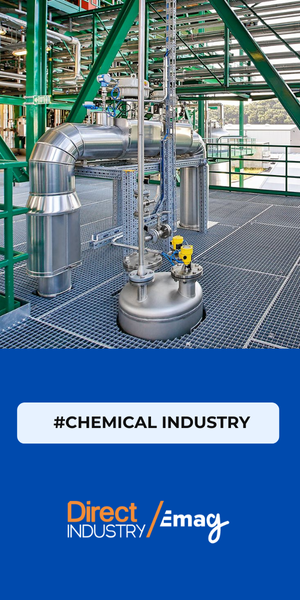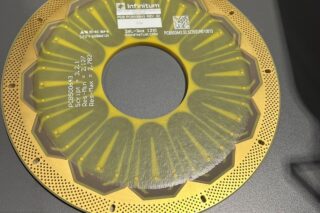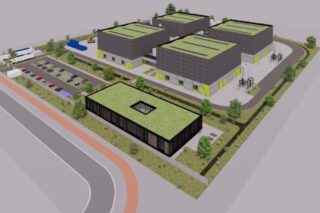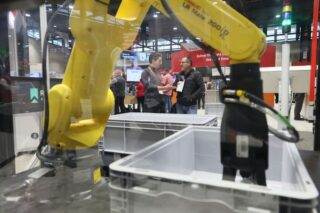With over 22 years of experience in the French Air Force, Marc Rivière—now Global Advisor for Aerospace and Defense at PTC—offers deep operational insight into the transformation underway in the sector. From digital continuity and cybersecurity to sustainability and embedded software, he outlines how PTC supports an industry in full evolution.
Digital transformation in aerospace and defense no longer stops at design. It now spans the entire product lifecycle, from engineering to in-service support. With 20% of its revenue coming from this strategic sector, PTC has made aerospace a cornerstone of its product strategy.
We sat with Marc Rivière, former military program director and now one of the key drivers of this transformation at PTC.
A Business-Driven Tech Strategy
Marc Rivière is not a pure technologist. A former Air Force officer and program director for the A400M, he brings to PTC a vision deeply rooted in operational reality.
“My role is to be the bridge between our clients’ business challenges and our product roadmap.”
This is a crucial stance in a sector that tolerates neither improvisation nor approximation, where engineering must meet requirements of safety, sovereignty, and increasing agility.
PTC’s DNA: Complexity, Continuity, Connectivity
At the core of PTC’s DNA lies the mastery of complexity.
“We support OEMs who design complex products with highly variable configurations and significant in-service support needs. This is truly our DNA.”
The goal is clear: to ensure that the industry’s needs are fully addressed. This involves better complexity management, faster innovation, seamless continuity between requirements management and engineering, as well as improved production control.
Aerospace and defense have their specificities, which PTC fully integrates into its solutions. For example, the widely used S-Series standards in this sector have led to dedicated developments:
“We have developed specific products that support these S-Series standards to ensure better management of continuity between engineering and service.”
The technological foundation? Windchill (PLM) and Creo (CAD), used by 75% of clients in the sector.
“At PTC, we believe that paying close attention to an industry like aerospace and defense is essential because it is the spearhead of many innovations. DS-Series, for example, are currently being adopted in other industries. Very often, we find that aerospace and defense are somewhat avant-garde in many areas. Ultimately, focusing on this sector trickles down to the rest of the industry.”
But PTC’s approach goes much further: connecting engineering, production, logistics, and maintenance within an open architecture capable of interfacing with ERPs, MROs, other PLMs, or CAD tools.
Cybersecurity and Sovereignty: Strategic Priorities
With rising cyber threats and new regulations like EASA’s upcoming Part-IS, cybersecurity is no longer optional—it’s embedded from the start in PTC’s tools.
“We’re continuously evolving Windchill to meet the highest security standards, including security labeling features.”
Part-IS doesn’t just cover product design—it mandates end-to-end security across the entire product lifecycle, including in-service phases. This shift forces companies to demonstrate compliance across every step, from design to deployment.
“Collaborating with industrial partners increases the risk of data breaches and IP theft. We need robust, sovereign tools to mitigate these risks.”
Marc Rivière explains that PTC’s goal is to helps customers navigate this challenge by providing the infrastructure needed to maintain certification-grade security.
Digital Thread and Augmented Reality: Human-Centric Agility
And what about augmented reality? AR has long been a key focus for the company, and its importance is even greater in the aerospace sector — particularly when it comes to maintenance. For Marc Rivière, it’s a human interface to the digital thread. AR connects systems, processes, data, and people, providing contextual information where it’s most needed.
“AR is just a terminal. What matters is the contextual data it delivers to the human operator.”
In aircraft maintenance, for example, AR can visualize operations in real time—tracking who is doing what, where, and at what stage.
“For example, I plan the maintenance for the week, I have my six workstations in the hangar, and then a plane breaks down during a flight line operation. Everything has to be rearranged, and an emergency team mobilized. This adaptation is much easier if I always know who is where, what they are doing, and what the progress status is.”
In this logic, augmented reality acts as an intelligent interface between the physical world and the digital world, putting the operator back at the center of the system.
READ ALSO
From Embedded Software to the Front Line: A New Tactical Advantage
For PTC, supporting the aerospace and defense sector also means enabling innovation at every level — from startups to large OEMs, from sustainability-driven retrofits to real-time battlefield operations.
In modern defense, embedded software has become a full-fledged tactical issue. It’s no longer just an engineering concern. Software lifecycle management now extends all the way to the battlefield, where speed, adaptability, and sovereignty are mission-critical.
“On the A400M, the real issue was managing the FLS — Field Loadable Software — the critical onboard software, and their obsolescence. Between mission planning, navigation, weather, and maintenance systems, it was a constant puzzle. You need continuous software management, right down to the field. That’s not just engineering — it’s end-to-end lifecycle management.”
In rapidly evolving operational contexts, industrial systems must adapt almost in real time. That’s where the digital link between industry and operations becomes a strategic asset.
“The faster we move, the more we need systems that can adapt to operational needs in near real time. Software evolves much faster than hardware. It can become obsolete overnight. We have to manage that — from design to field deployment. The industry-operation link is critical. And it’s digital.”
The war in Ukraine is a harsh illustration of this disconnect. Industrial delivery timelines are no longer fast enough — forcing soldiers on the ground to build their own drones and weapons on the fly.
“What we’re seeing in Ukraine is what doesn’t work. Industry delivers too slowly. On the ground, operators have to build their own gear. If we don’t equip industry to match the pace of evolving operations, innovation happens on the battlefield — without structure.”
PTC addresses this shortfall with tools like Codebeamer, which integrates software and hardware lifecycle management in highly secure environments. It goes beyond product design to manage the full configuration and update lifecycle — even in operational theaters.
Sustainability: Rethinking the Lifecycle
With tools like Windchill, PTC enables carbon traceability throughout the product lifecycle.
“In the aerospace sector, we’re deploying Windchill solutions that track the carbon footprint of a product across design, production, and service.”
These carbon data are transformed into actionable environmental KPIs embedded into systems, enabling companies to manage sustainability at scale.
But for Marc Rivière, sustainability also means supporting disruptive propulsion technologies — such as electric, hybrid, or hydrogen — through the right digital infrastructure.
“Sustainability isn’t just about tracking a product’s footprint. It’s about supporting companies like Safran, who are investing in the propulsion systems of tomorrow.”
For him, digital continuity and rapid innovation capabilities are essential for this next generation of aerospace solutions.
Toward the Digital Product Passport in Aerospace?
PTC is also preparing for the next big step: the Digital Product Passport. While still nascent in aerospace, it promises a unified approach to traceability, predictive maintenance, and compliance, aligned with emerging EU standards.
“It’s a major priority for us.”
READ ALSO






![Image [BUYING GUIDE] How to Choose the Right Industrial Robot?](/wp-content/uploads/sites/3/Industrial-Robot-320x213.jpg)

![Image [Buying Guide] How to Choose the Right Safety Shoes?](/wp-content/uploads/sites/3/Safety-Shoes-320x213.jpg)


![Image [Buying Guide] How to Choose the Right AMR?](/wp-content/uploads/sites/3/AMR-320x213.jpg)